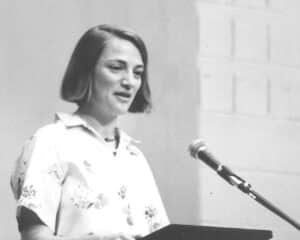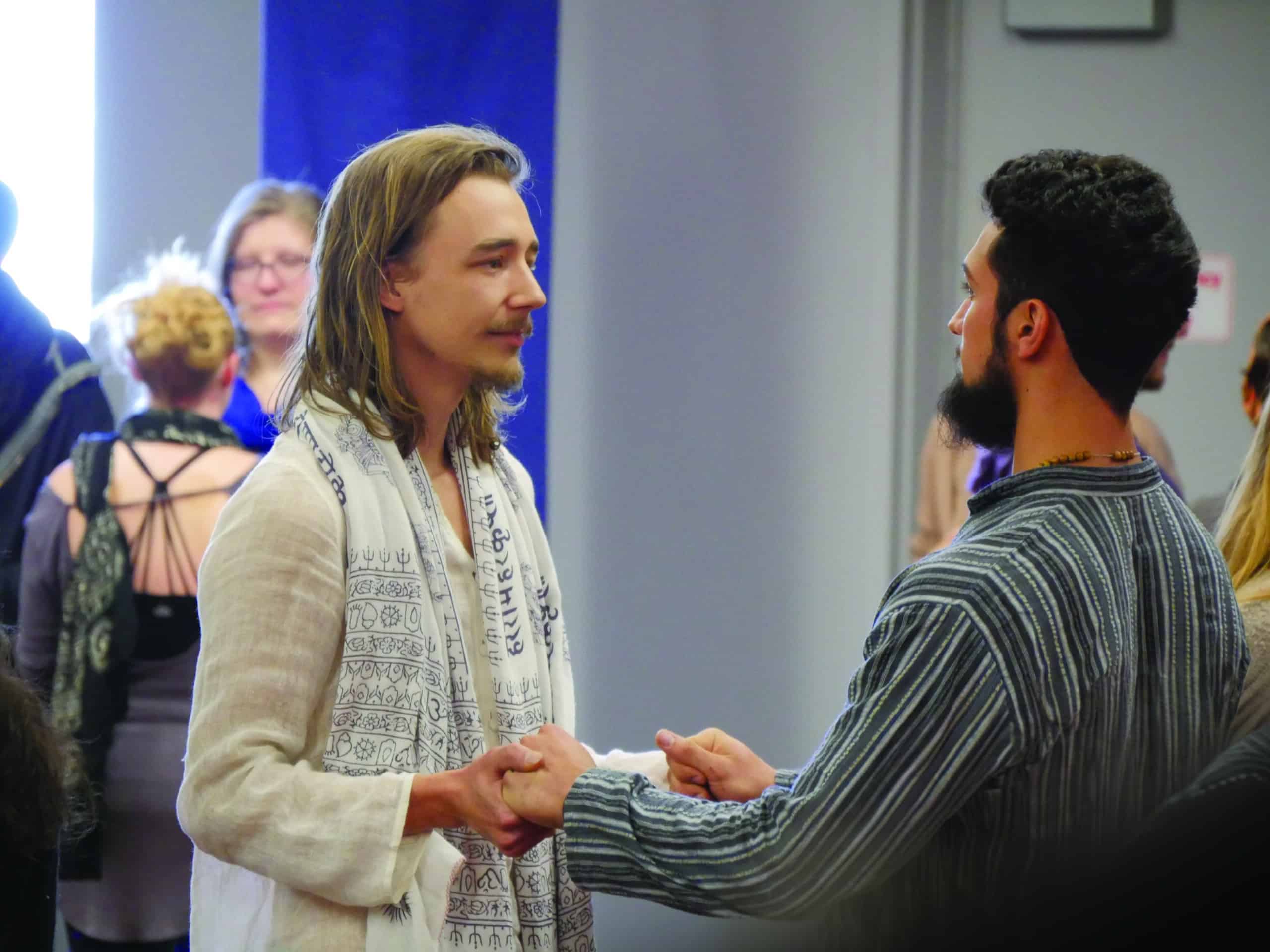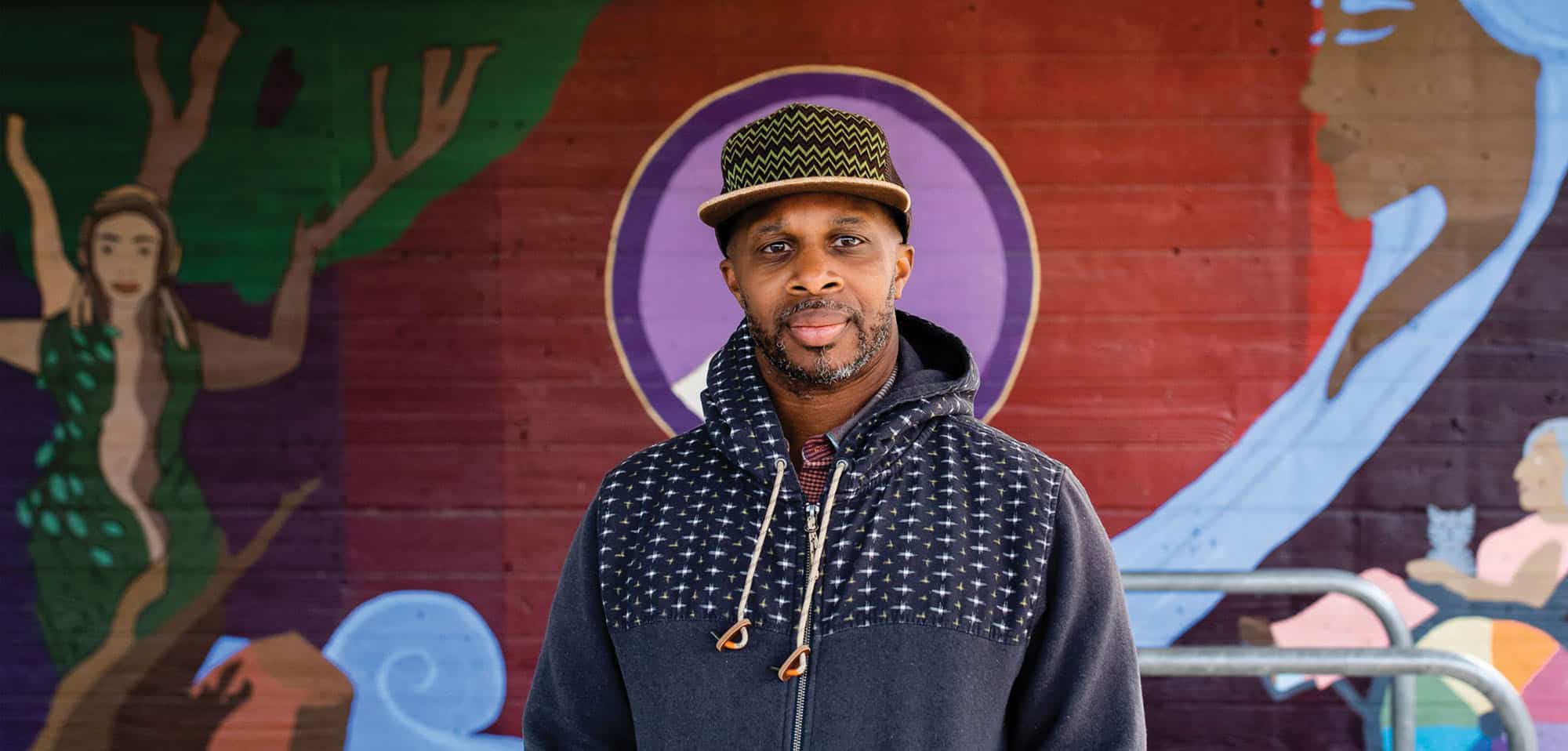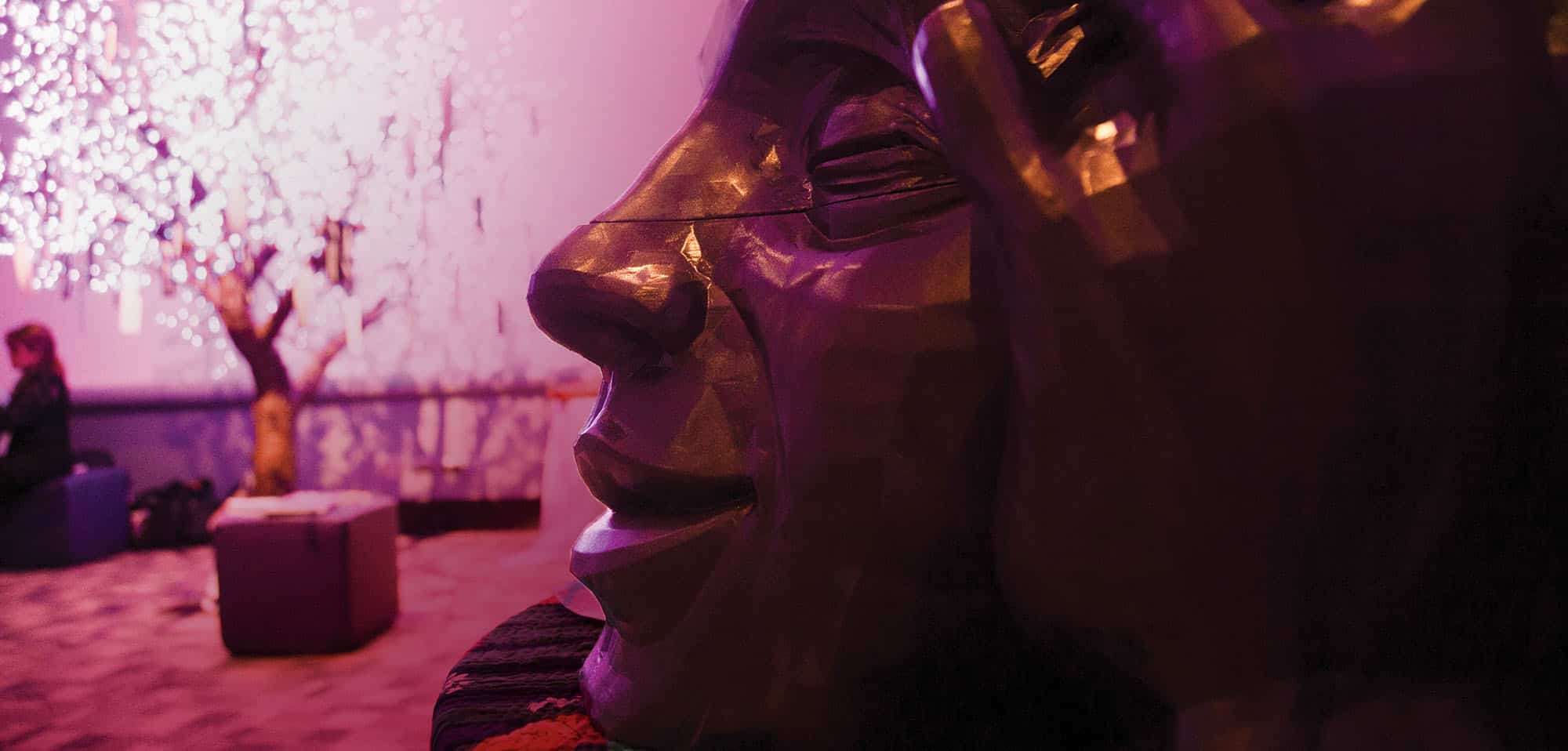First-Person Inquiry
In Naropa Institute’s inspiring opening convocation in June of 1974, Chögyam Trungpa Rinpoche called for “relighting the pilot light”of American higher education. Those of us present who were to become Naropa’s founding year-round faculty members had no idea how that might occur, but Rinpoche had tremendous faith that we could figure it out. He guided aspects of Naropa’s curriculum, approach, and vision, but left the implementation up to us. We knew that meditation practice was a key, as it had shaped our own artistic, psychological, and academic journeys in such important ways. But when it came to designing courses and teaching our students, we were unsure exactly how to do things differently.

When Naropa’s year-round program opened in January of 1978, the small circle of full-time faculty began to experiment, workshopping our courses, brainstorming our curricula, and co-teaching across our respective disciplines. Rinpoche’s influence had brought a palpable excitement to learning in an atmosphere of inquiry and creative expression, and we wanted to do the same. Like ancient India’s Nalanda University, Rinpoche was clear that Naropa was not to be a Buddhist seminary. He reminded us,“We don’t want to lay our trip on anyone,” as in catechismic doctrinal learning. Instead, he wished to create an open environment of inquiry, assuring us that when we bring East and West together “the sparks will fly.” It was true, from the very beginning, the Naropa classroom was special—alive, engaged, deeply personal. We wanted to discover the “secret sauce” that made this so and strengthen it, so that it could grow over the decades.
Of course it was challenging to start a brand new college with a mere $2,000 loan. We had to juggle our careers as payroll was spotty, our students were dedicated but broke, and rental facilities were sketchy and inadequate. I don’t know how we kept the lights on. Everyone had second and third jobs. For four years, my faculty office was a booth in the nearby New York Deli supported by a discount coffee card given tome by the sympathetic proprietors. Still, those were exciting days as we were deeply inspired by a different vision for education that included the “whole person,” actively inquiring into all aspects of experience through the lens of meditation practice. We had glimpsed the fresh pilot light for ourselves, and we were doing everything to nurture it.
It is not enough to entertain students with fun field trips or lengthy disclosures about emotional experience.
Over time as Naropa grew, our full-time faculty became more diverse, not all of them students of the founder, and increasingly from diverse spiritual traditions. They gravitated toward Naropa because of its vision for education, its dynamic atmosphere, its close-knit community, and its creativity. It certainly wasn’t for the salary and benefits and fancy campus. In this growth, we faculty continued to share appreciation for how contemplative practice, personal inquiry, and the creative arts influenced learning for our students.
For years we didn’t know how to describe what we were doing in the classroom. Our visiting accreditation teams were immediately entranced by Naropa—the boldness of the vision and the openness of our students—their wholehearted questions and their creative insights. It was clear they envied us in some way. To our surprise, they had no concern about our educational vision or curriculum; their concerns focused solely on our financial sustainability. The 1986 accreditation team suggested that what we were doing could be called “contemplative education,” and the name stuck. In the years that followed, we have gradually found more coherent ways to describe the uniqueness of Naropa’s educational approach.
One of Naropa’s early summer faculty was the brilliant Chilean cognitive scientist, Francisco Varela, who later went on to co-found Mind & Life Institute to foster dialogues between science and Buddhism. He was profoundly influenced by Rinpoche’s meditation instruction and eventually developed what he called “neurophenomenology,” a kind of “first-person science” that valorized personal insight in radical new ways. His work suggested that the“wisdom born within” personal experience is a valid means of knowledge that cannot be discounted by objective science, and that incorporating“first-person inquiry” provided perspectives that richly enhance those gained through “second-person” and“third-person” inquiries. While Francisco did not specifically address education in his work, his theories have formed the basis for the interdisciplinary field of Contemplative Studies.

As years have passed, Naropa faculty have discovered that this language beautifully describes our unique approaches to the university classroom. According to Varela, third-person inquiry includes the study of classical subjects of science, psychology, environmental studies, religious studies, literature, and the arts, drawing sustenance from the centuries of the luminaries who have gone before. Conventional university education highlights these methods, drawing on library research, lecture formats, research papers, and objective perspectives. Int he seventies, the experiential education movement envisioned by philosophers JohnDewey and Paulo Freire began to incorporate experiential methods—second-person inquiry—as a complement to third-person inquiry, drawing on laboratory science, service learning, study abroad, and classroom projects that promoted learning through interaction, encounter, and hands-on experience. This brought new life to classrooms, engaging students on a more personal level. At the time of Naropa’s founding, these two modes of inquiry were already well-established ways of learning in higher education.
First-person inquiry recognizes that there is an active subject at the heart of all experience, intelligent, aware, and curious. While western education, especially science, has doubted this, insisting that students bracket, even mistrust, their subjective experience, contemplative and spiritual traditions have known that this awareness is waiting to be cultivated and expressed.In educational settings, the spark of fresh learning takes place within this active subject. Artistic disciplines have also valued the creative impulse that comes from this awareness. Chögyam Trungpa highlighted this aspect of education, encouraging the joining of “intellect and intuition.” Our founding faculty developed courses and requirements that ensure contemplative practices, creative processes, deep observation, and reflective writing draw out the inner wisdom across all of our disciplines.
Of course, there is a reason that universities have developed suspicion about the subjective. If misunderstood, it is natural that impulsive habitual thinking, subconscious gossip, and wandering mind might be mistaken for first-person inquiry.Remaining impulsive inhibits learning, as students and faculty create fortresses of self-centered opinion that fend off fresh perspectives. The kind of education that plumbs the depths of interiority requires discipline, cultivation, and critical subjectivity. This means that faculty cannot just talk about interiority—we have to explore it in our personal practice and experience, and we must cultivate it in our pedagogies and our assignments. We have learned that it is not enough to just sit for five minutes at the beginning of class and then lecture for 75 minutes. It is not enough to entertain students with fun field trips or lengthy disclosures about emotional experience. We need to develop an interplay between study of classical sources, interactive learning, and especially, disciplined interiority. Then our refined subjectivity has discernment and clarity.
We have discovered that first-person inquiry is the essential ingredient in deep learning, perhaps the “secret sauce”? When students recognize an insight because it resonates with their own deepest wisdom, they discover treasures that were always their birthright. When sophomore Kate discovered that the journey of overcoming addiction had classic stages of awakening inner resources like anthropologist van Gennep’s rites of passage, she was able to join the legions of young people finding their way into adulthood.When military veteran Dave encountered issues of moral injury, he was able to identify ways that mindfulness practice could support recovery from post-traumatic stress disorder. Our students come alive, empowering their own journeys as lifelong learners and discovering their own wakefulness reflected in the wisdom of the ages. This process may begin through their personal stories as the ground of inquiry, but with discipline they find that their most challenging obstacles become the gateway to the deepest service to others.
This practice begins to point the students to the contrast between thinking and being present in a mindful way.
Since the experiments with first-person inquiry birthed at Naropa University in 1974, our faculty have been committed to exploring the ground of that moment when inquiry is sparked in personal experience. Since the beginning, mindfulness practice has served as the core of Naropa’s pedagogy for teaching and learning. It is taught at new student orientation, and many courses include varieties and versions of mindfulness training as foundational to contemplative learning. Students are taught to sit erectly but comfortably, eyes open with a soft gaze, and to place attention on the breath.When thoughts arise, carrying the students away from mindfulness, they can acknowledge the thoughts, bringing the attention back to breathing. This practice begins to point the students to the contrast between thinking and being present in a mindful way.
The signature contemplative pedagogy of all Naropa classes, gatherings, and meetings is the Naropa Bow, developed almost 50 years ago by Naropa’s founder.This three-second moment of mutual recognition that opens and closes our classes and gatherings provides community structure for acknowledging the present moment, making a conscious decision to enter the immediacy of the contemplative environment, and to affirm connection with others as well as oneself. These transitional methods allow students to transition from the stresses of life, prepare for the task at hand, and instantly build community. It is also a reminder of the power of interiority, bringing students to the heart of their own learning in this very moment, the only moment we truly have. The bow empowers faculty and students individually, and it empowers community.
Over the decades, Naropa faculty have developed many distinctive pedagogies designed to spark first-person inquiry within the disciplines they are teaching. Some of these pedagogies can be traced back to teachings of the founder. Others have been developed along the way, influenced by diverse spiritual, psychological, and artistic traditions. They have included diverse Buddhist compassion practices but they also include yoga and traditional eastern arts practices, basic attendance practices, contemplative genogram, formless silence, centering prayer, contemplative reading and writing, embodied awareness, contact improvisation, social transformation practices, and many more.
Could first-person inquiry be the spark that relights the pilot light of higher education in America that Rinpoche spoke of 50 years ago? We may never know, but these fresh pedagogies have brought life to our classrooms, engagement with the deepest issues of our experience, and knit our community together around a common vision for a meaningful educational experience.





